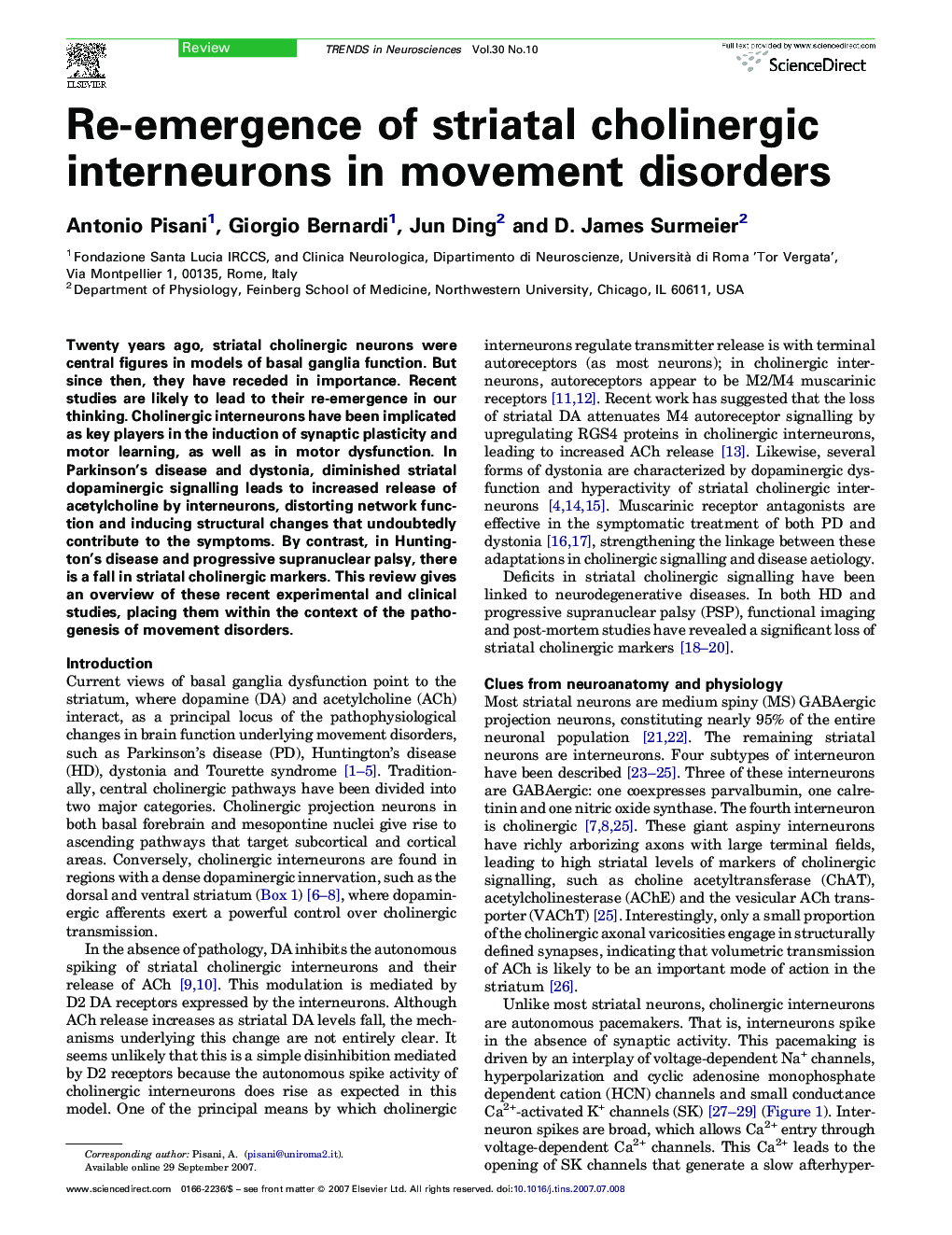| Article ID | Journal | Published Year | Pages | File Type |
|---|---|---|---|---|
| 4354951 | Trends in Neurosciences | 2007 | 9 Pages |
Twenty years ago, striatal cholinergic neurons were central figures in models of basal ganglia function. But since then, they have receded in importance. Recent studies are likely to lead to their re-emergence in our thinking. Cholinergic interneurons have been implicated as key players in the induction of synaptic plasticity and motor learning, as well as in motor dysfunction. In Parkinson's disease and dystonia, diminished striatal dopaminergic signalling leads to increased release of acetylcholine by interneurons, distorting network function and inducing structural changes that undoubtedly contribute to the symptoms. By contrast, in Huntington's disease and progressive supranuclear palsy, there is a fall in striatal cholinergic markers. This review gives an overview of these recent experimental and clinical studies, placing them within the context of the pathogenesis of movement disorders.
